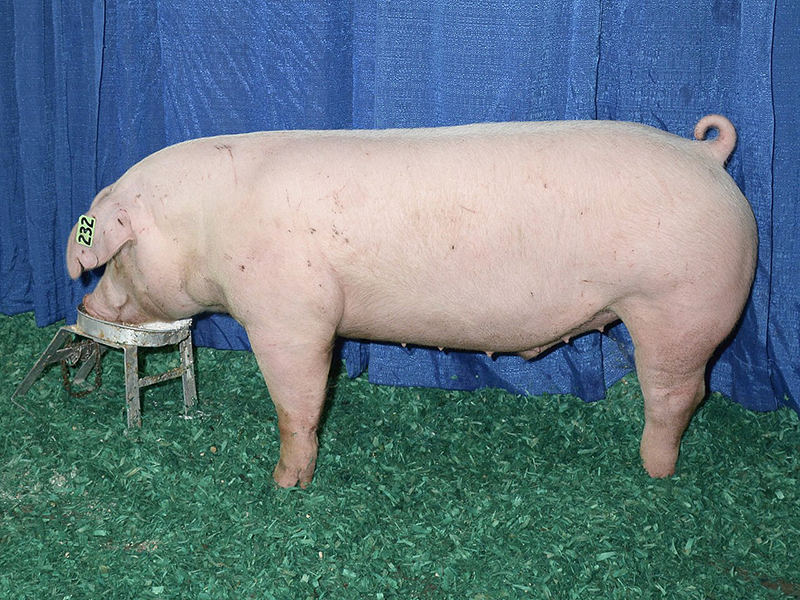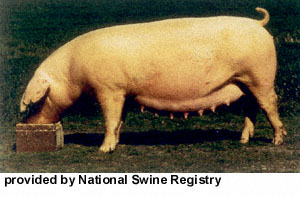American Landrace Swine
The various strains of Landrace swine are the  descendants of the famous Danish Landrace hogs that were developed in Denmark. The development of the breed began in about
1895. It resulted from crossing the Large White hog from England with the native swine. It was largely through the use of the Landrace
that Denmark became the great bacon-exporting country, with England as the chief market.
descendants of the famous Danish Landrace hogs that were developed in Denmark. The development of the breed began in about
1895. It resulted from crossing the Large White hog from England with the native swine. It was largely through the use of the Landrace
that Denmark became the great bacon-exporting country, with England as the chief market.
The U.S. Department of Agriculture received a shipment of the Danish Landrace in 1934 from their native country. Many of those hogs were used in cross breeding by the Department and by Agricultural Experimental stations to which they were made available, and became ancestors of a number of new breeds. The foundation stock of the American Landrace were these hogs that were bred pure or carried a small infusion (one-sixteenth to one-sixty-fourth) of Poland China blood. The Department of Agriculture followed its policy of selling desirable seed stock to private individuals. Thirty eight head of boars and gilts were imported from Norway that carried Norwegian, Danish and Swedish Landrace blood. Their blood is being blended into the American Landrace and gives a broader genetic base to the breed.
 The American Landrace is a white hog of long body length, having sixteen or seventeen
pairs of ribs. The arch of back is much less pronounced than on most other breeds
of swine. For some hogs the back is almost flat. The head is long and rather narrow
and the jowl is clean. The ears are large and heavy and are carried close to the face.
There is an admirable meatiness about them on foot and particularly on the rail. The
rumps are long and comparatively level and the hams are plump but trim. The sides
are long, of uniform depth, and well let down in the flank. The sows are prolific
and satisfactory mothers. The sow have always been noted for their milk producing
abilities. Studies have shown that they reach their top milk production after five
weeks of lactation which is later than other breeds compared.
The American Landrace is a white hog of long body length, having sixteen or seventeen
pairs of ribs. The arch of back is much less pronounced than on most other breeds
of swine. For some hogs the back is almost flat. The head is long and rather narrow
and the jowl is clean. The ears are large and heavy and are carried close to the face.
There is an admirable meatiness about them on foot and particularly on the rail. The
rumps are long and comparatively level and the hams are plump but trim. The sides
are long, of uniform depth, and well let down in the flank. The sows are prolific
and satisfactory mothers. The sow have always been noted for their milk producing
abilities. Studies have shown that they reach their top milk production after five
weeks of lactation which is later than other breeds compared.
The hair color of the American Landrace must be white. Dark skin spots are considered undesirable. A few freckles on the skin are allowed but black hairs are not. Black Spotted pigs are not eligible for registration.
Breed Associations and Registries
P.O. Box 2417
West Lafayette, IN 47906-2417
Phone: (765) 463-3594
References
Briggs, Hilton M. 1969. Modern Breeds of Livestock. Third Edition, MacMillan Company
